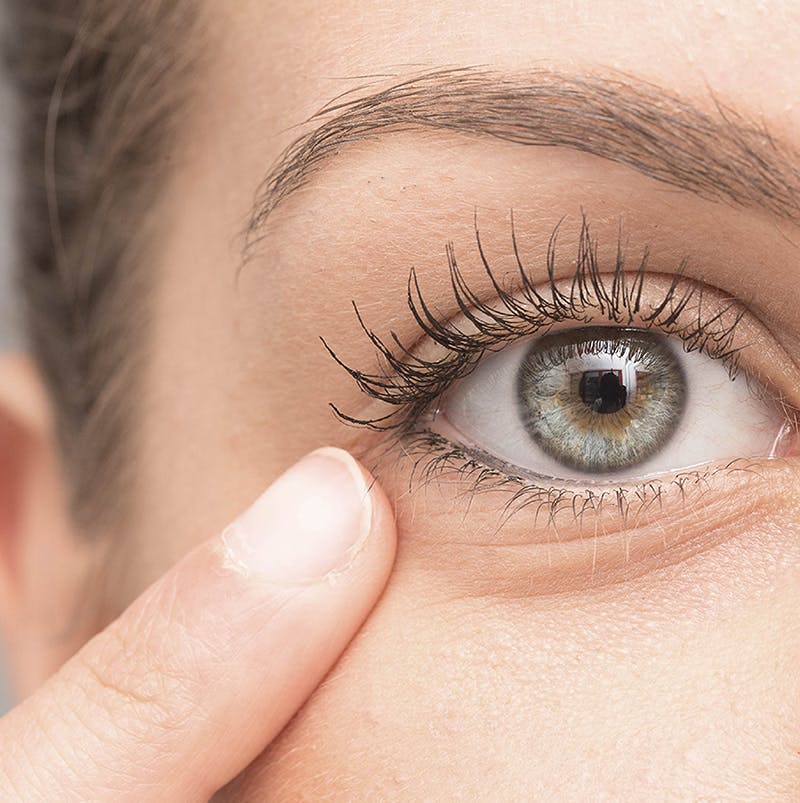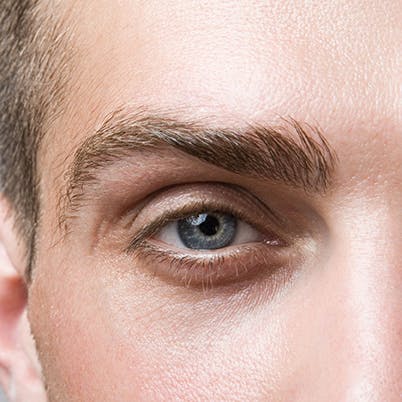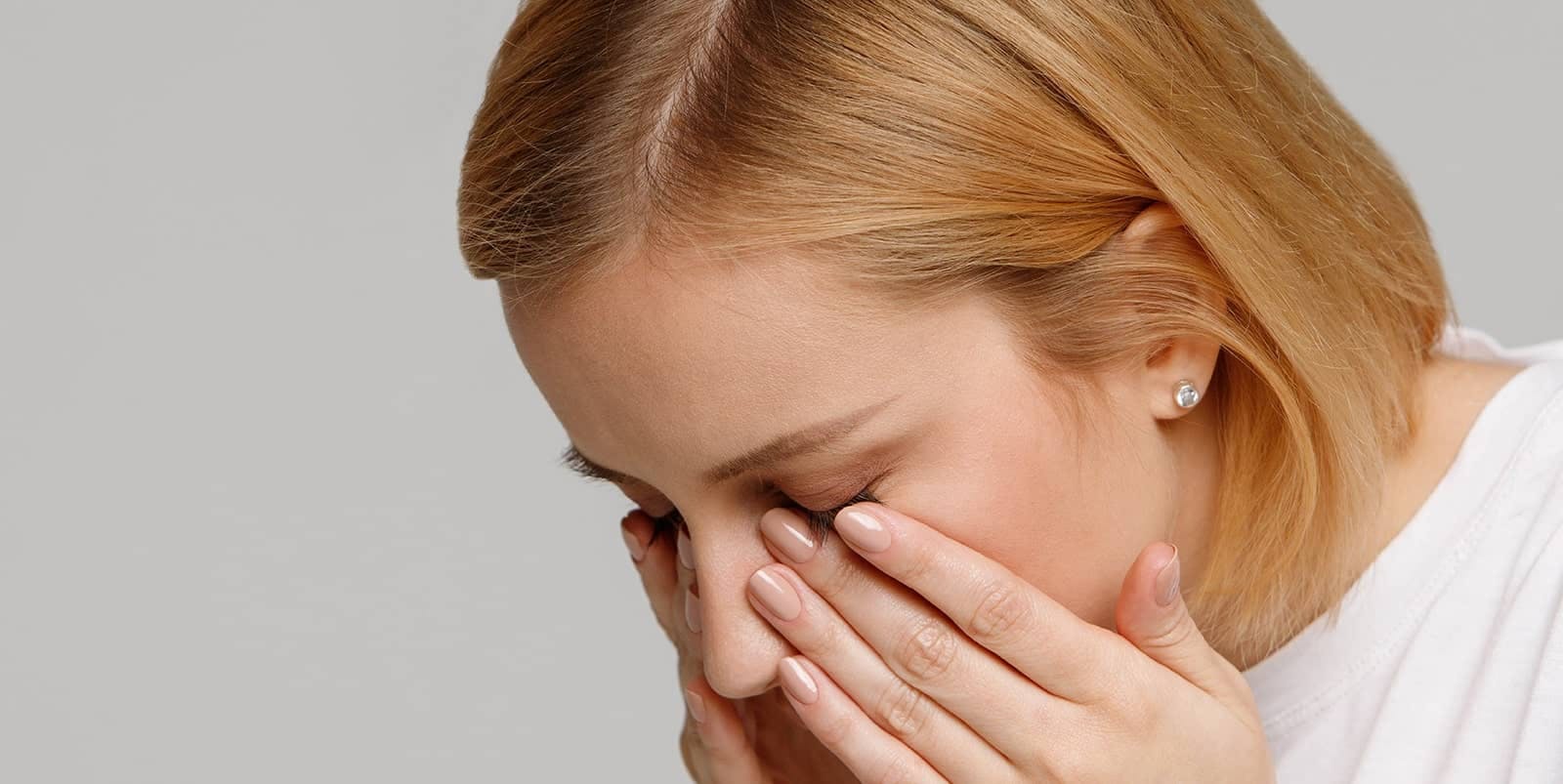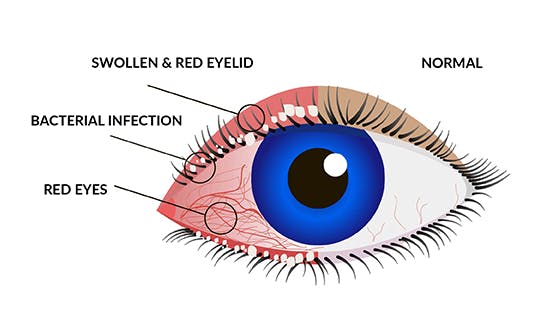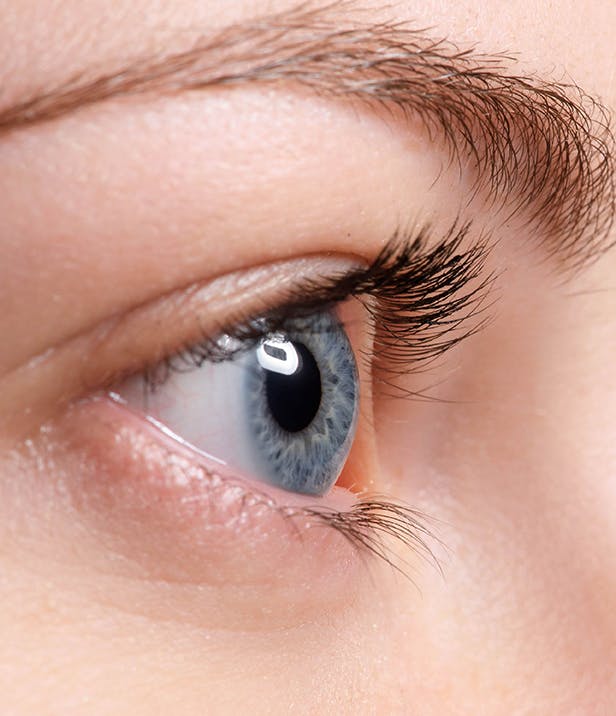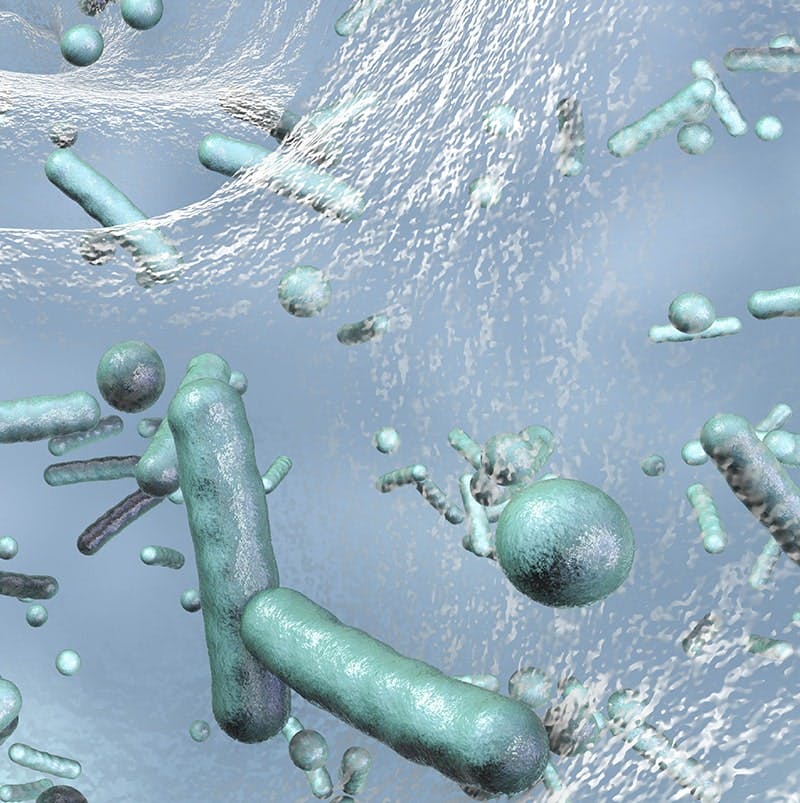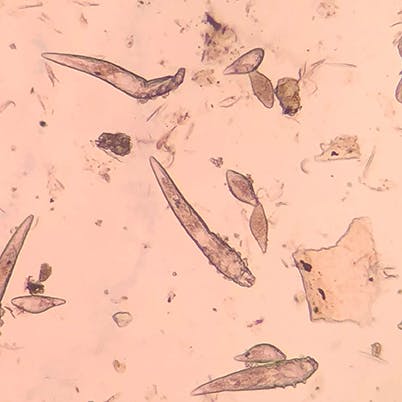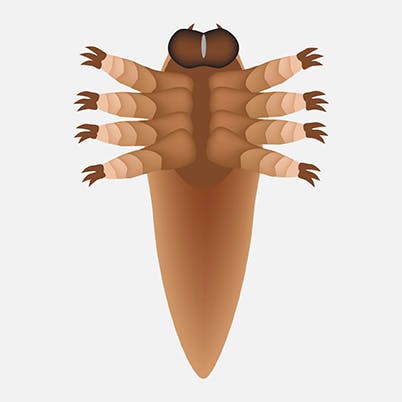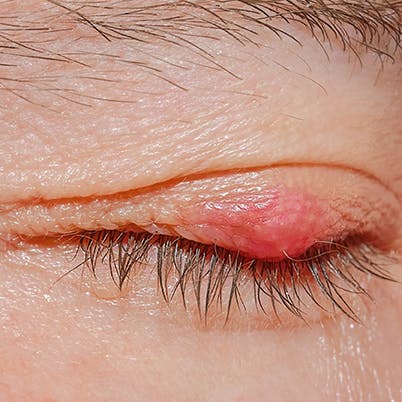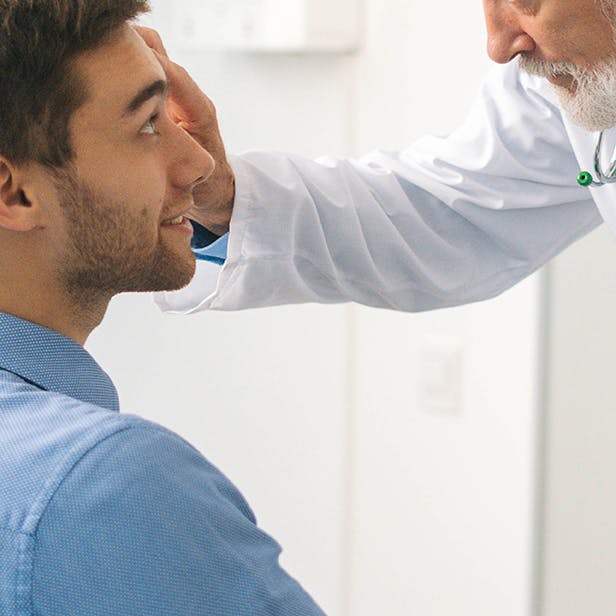1. FOLLICULITIS
Bacteria form thin biofilms. They start out on the lid margin but eventually find their way down into the eyelash follicles where they thicken and begin to cause inflammation of the lash bulb, the part that grows our eyelashes. Eventually, the eyelash will become thin, crooked, and fall out. Evidence of folliculitis is crusting (sometimes called "scur") along the lash line. The eyes may feel itchy, swollen, and sore, or be totally asymptomatic.
2. MEIBOMIANITIS
Biofilms reach the meibomian glands, clogging them, and limiting oil production. QSGA activates, causing the bacteria to multiply and release toxins that trigger a stronger inflammatory response within the glands. There is visible inflammation, discomfort, and gland obstruction, known as meibomian gland dysfunction (MGD) or meibomianitis. Symptoms are redness, irritation, light sensitivity, and paradoxically, watering of the eyes.
3. LACRIMALITIS
As the biofilms continue to advance, they start to affect the lacrimal glands, causing them to stop functioning well. They no longer produce their portion of the tear film (the aqueous portion) effectively. The tear film is severely compromised, resulting in dry, irritated eyes.
4. PAN - BLEPHARITIS
With pan-blepharitis, there is chronic inflammatory damage to nerves and tissues in the area. At this advanced stage, secondary problems like eyelid ptosis (sagging) occur, which can limit the visual field. There is persistent dryness and irritation of the eyes.

